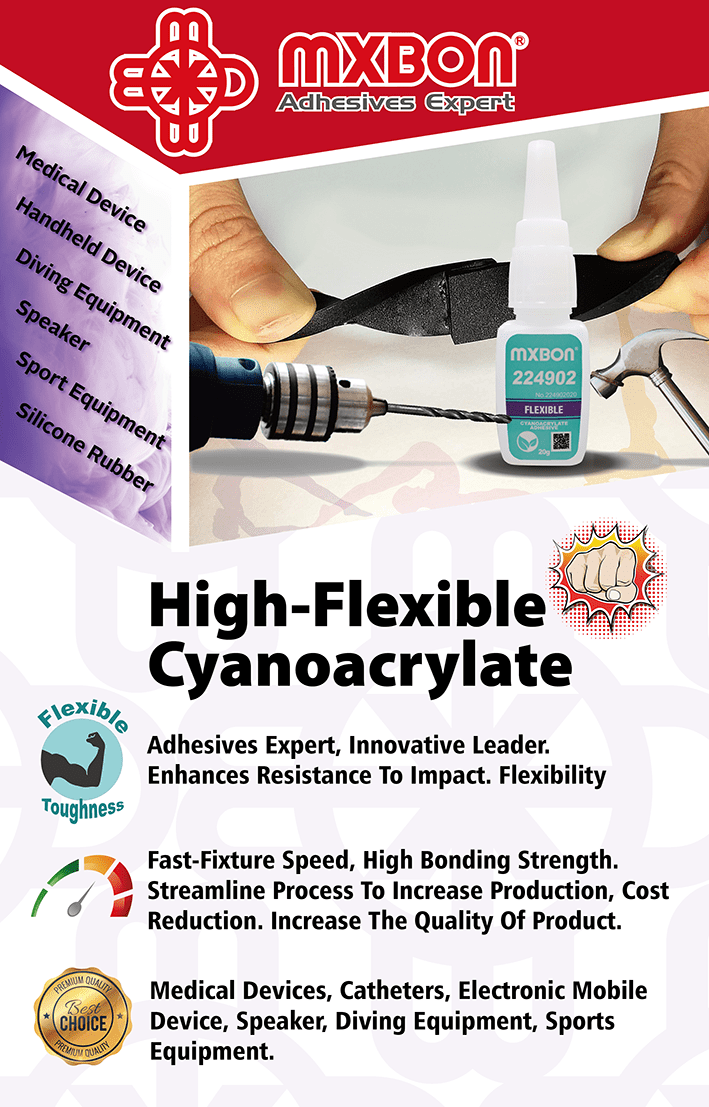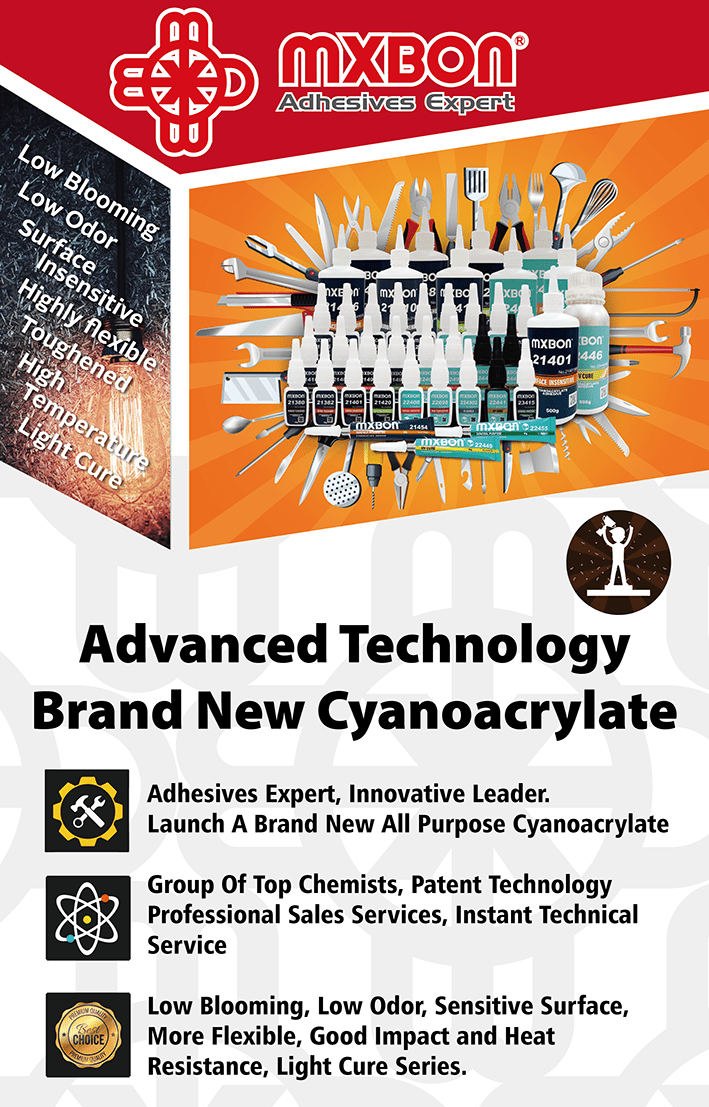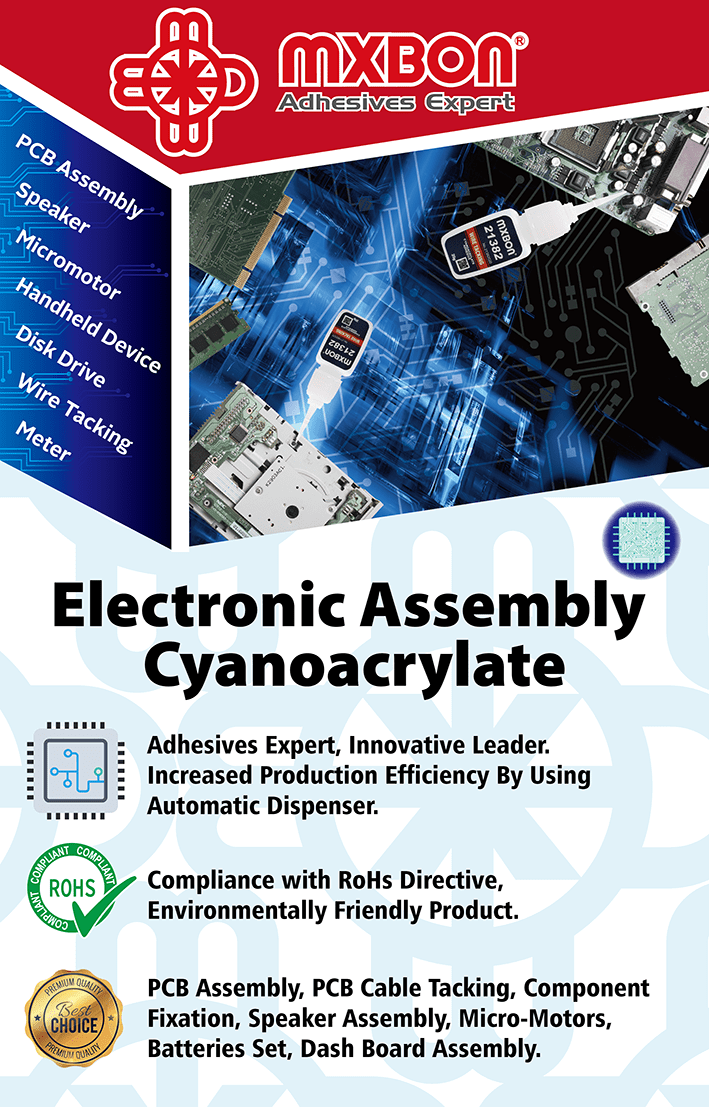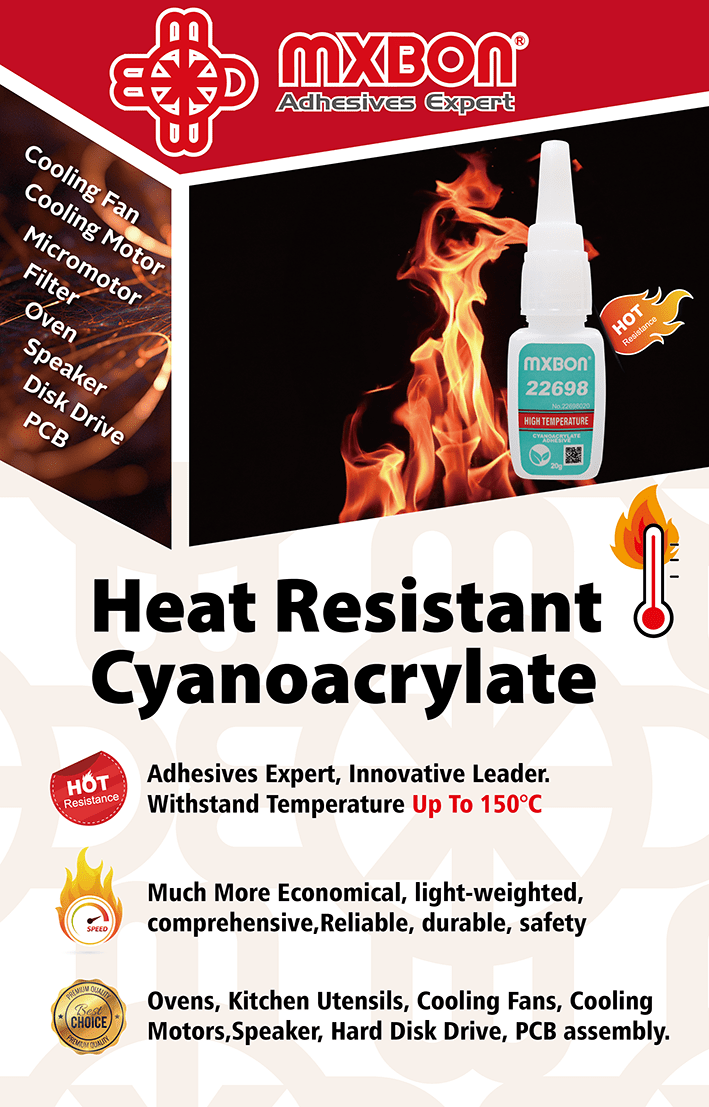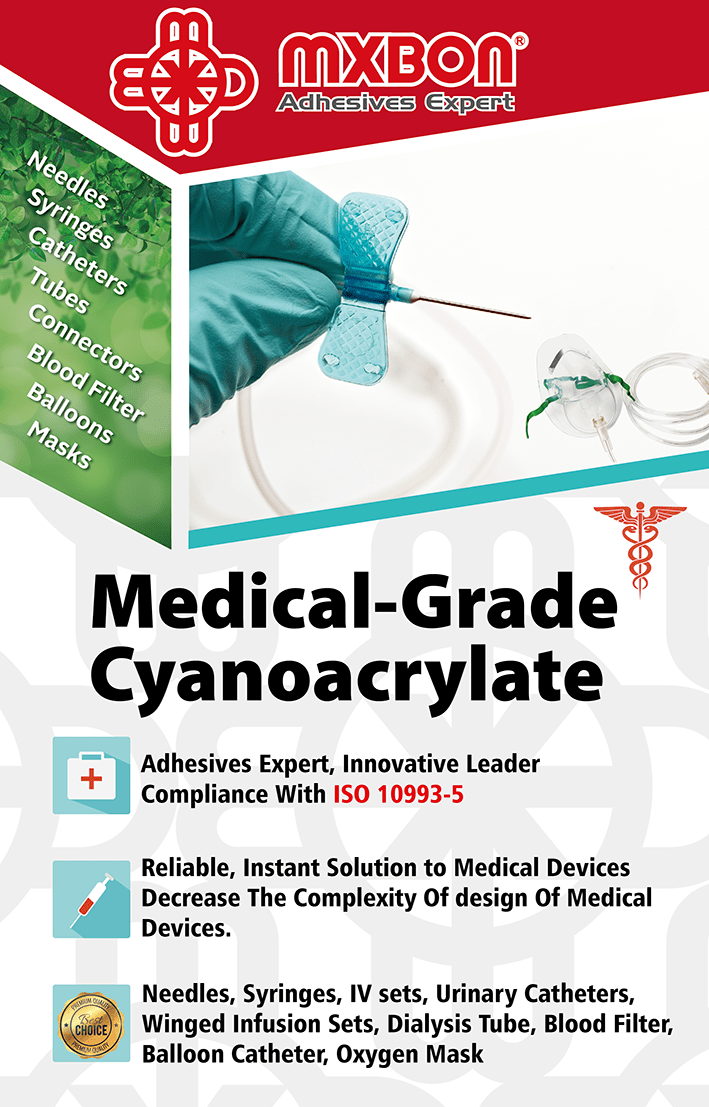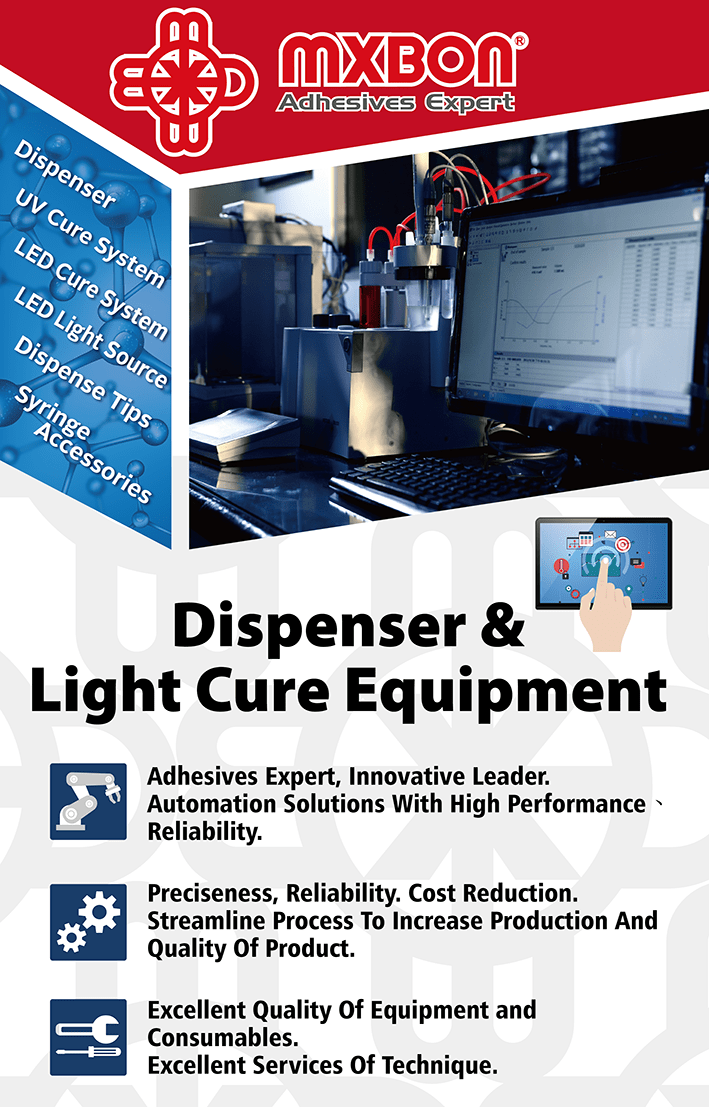Methyl & Ethyl Cyanoacrylate Adhesives
Low Bloom & Low Odour Series
Light Cure Cyanoacrylate Adhesives
Methyl & Ethyl Cyanoacrylate
General Purpose Series
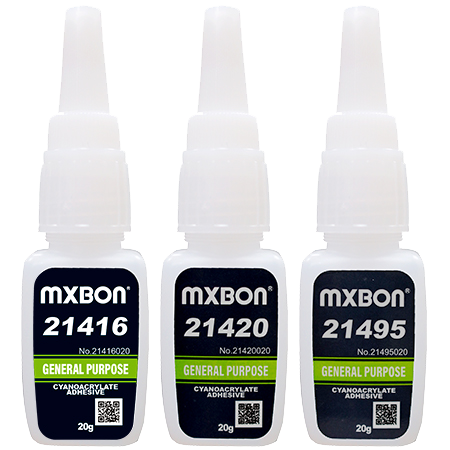
Rubber Toughened Series
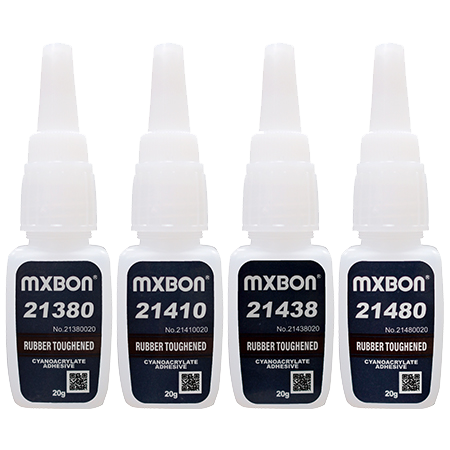
Metal Bonding Series
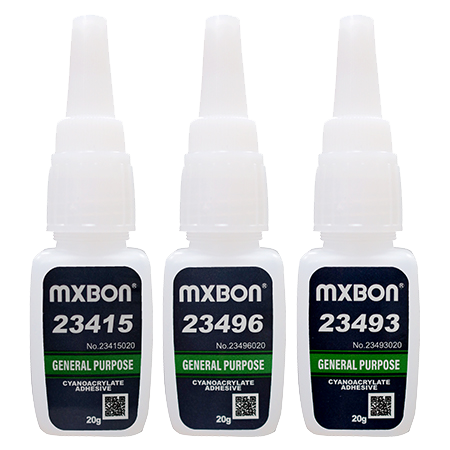
Special Functionality Series
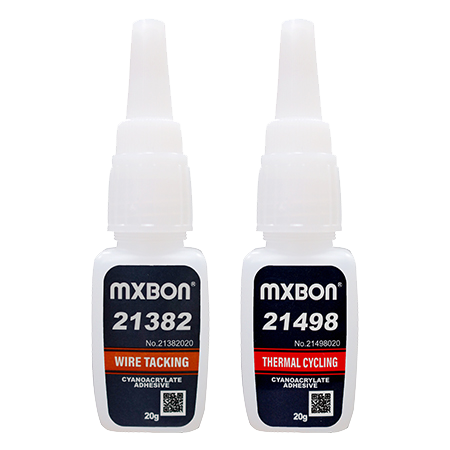
Surface Insensitive Series

Primer & Accelerator Series
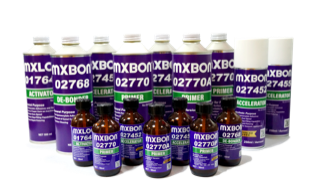
Low Bloom & Low Odour Series
General Purpose Series
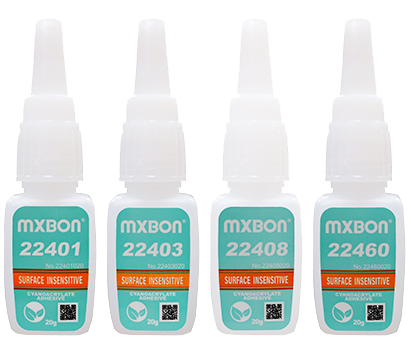
Special Functionality Series
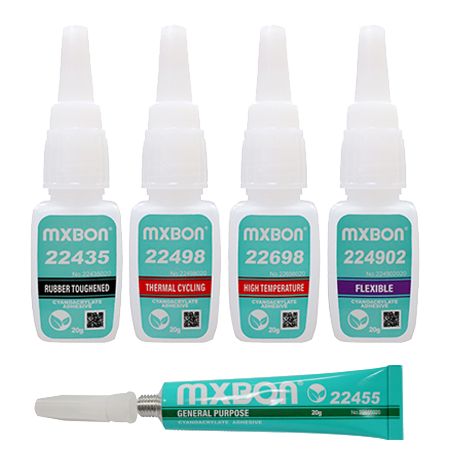
Light Cure Cyanoacrylate Series
Light Cure Series
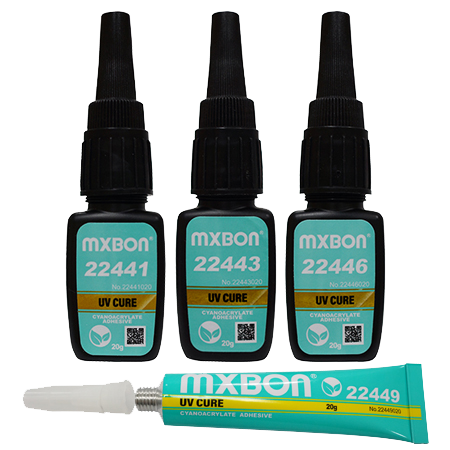
Frequently Asked Questions
It is a liquid adhesive polymer that is stable at room temperature but will polymerize rapidly or harden when in contact with moisture or when 2 materials are placed together with adhesive acting as the bonding agent. The common term for Cyanoacrylate is Super Glue.
Cyanoacrylate glue can only bond with a surface when there is moisture present. If the cyanoacrylate glue is placed on a perfectly dry surface, it will not stick to the surface or form a bond. In contrast, when any amount of moisture is present, the molecules in the cyanoacrylate glue will react with the moisture to form tight chains in between the two surfaces in contact. This reaction generates heat and bonding will occur instantly.
Cyanoacrylate adhesives blooming occurs when un-reacted cyanoacrylate particles (monomers) evaporate, then once airborne, react with surrounding moisture and fall back down in areas surrounding the joint. This leaves a whitish residue, which is not aesthetically pleasing in some cases, although does not affect the bond in any significant way. It happened more often in areas when there is finger contact.
- Use a low blooming or low whitening type of cyanoacrylate adhesives like Mxbon Low Bloom Series (2-Methoxyethyl 2-Cyanoacrylate)
- Apply adhesive sparingly on parts to avoid an excessive application that may result in blooming.
- Use in a ventilated area with low humidity.
- Avoid fingers or stain parts with the adhesive.
- Accelerate the curing process with an Accelerator.
Only Rubber Toughened grades of Mxbon can be applied to flexible applications. These rubber toughened grades are designed to withstand flexing and able to bond most rubbers and plastics that require bending.
Cyanoacrylate adhesives generally can bond to most materials and surfaces if proper surface preparation is being carried out. There are some substrates like Silicione, Polyamide, Polyethene, Polypropylene and TPU are classified as Low Surface Energy (LES) substrates will not work well with cyanoacrylate adhesives. It needs special treatment like using a special Primer to treat the bonding surfaces before applying the adhesive. The other way is to augment the surface dyne using corona plasma treatment.
- Spray or apply special Accelerator on the adhesive area.
- Select a fast setting cyanoacrylate adhesive.
- Use the adhesive sparingly on the bonding area.
- Use UV light source to cure the specially formulated cyanoacrylate adhesive with UV initiator instantly.
There is strong choking fume that most cyanoacrylate adhesives will give out during usage. Avoid inhaling these fumes. Otherwise, select Mxbon Low Odor Series that does not emit any smell at all.

